|
IN SEARCH OF THE COSMOS CLUB
& THE 1944 EASTERCON
During the day on New Year's Eve 2008, when more sensible folk were already starting to get merry,
I made a field trip to Teddington, armed with the map E.Frank Parker had sketched for LAMPPOST #3.
A bit of googling a few weeks back had revealed, to my surprise, that the Paint Research Station
was still where it had been since the 1930s so I figured I'd take some photos of that and see
what else on Frank's little map still survived. To my great disappointment, the Paint Research
Station - or the Paint Research Association as it became - were derelict and boarded up. I was
several years too late (I later learned it had moved to a new site in 2005)! I snapped some pics
anyway, but what a disappointment.
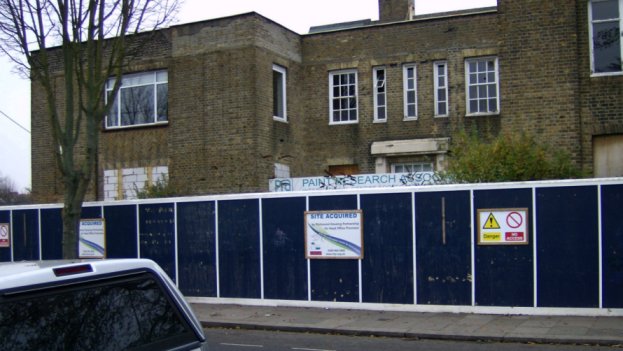
An even closer near-miss came with the King's Arms, where the Cosmos Club they would repair for
alcoholic refreshment. There was a King's Head on the road indicated on Parker's map, but it was
a bit too far along. Closer to where the pub should've been was one called 'The Clock House' but
of the King's Arms there was no sign. Of course, when going through those local history books I
came across a photo of the King's Arms and discovered it's the pub now called the Clock House,
but too late to call in for a quick pint, alas. Googling it later, I learned it had reopened as
The Clock House on December 1st, a mere four weeks before my visit. Here's how it used to look:
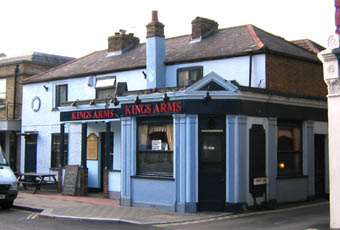
Still, these disappointments were more than offset by the discovery that the building where the
Cosmos Club actually held their regular meetings, and where the 1944 Eastercon was held, still
exists. It's not called "Shirley's Cafe" anymore of course - it's now "Spivack Chemist" - but it's
clearly the same building. Parker's map instructs people to go right on upstairs when they get
there because that's where the convention is. I hadn't been able to visualise this, but when you
see it it's obvious how this worked. The stairs are still visible in the front of the shop and
they lead up to a hall - presumably extra dining space at the time - that would easily accomodate
40 or so people.
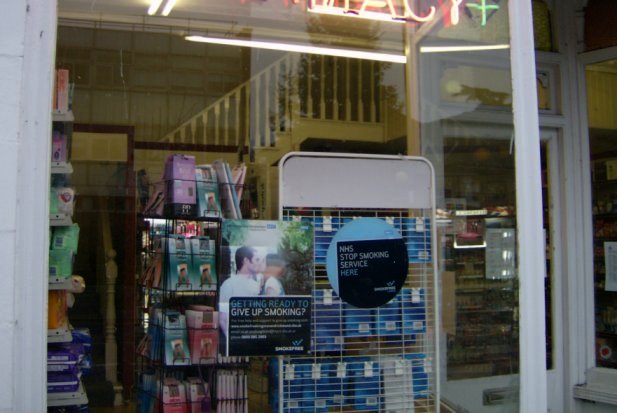
Those currently running it had no idea what the building had been used for in the 1940s,
so I did some checking in local history books at a local library just to be sure it was the
right building. My recent tribulations in locating the site of the Globe
(see RELAPSE #13)
had given me reason to be wary in this regard. A photo from the early twentieth century in one
book showed the Clarence Hotel - now called the Park - and that section of Park Road looking
pretty much as it does now. There were no buildings demolished between then and now that could
have been alternate candidates for Shirley's Cafe. I found another photo that shows how the front
of the shop had looked before it became Spivack, but it wasn't until I phoned the Local History section
at Richmond Old Town Hall that I got confirmation the building had definitely been a cafe in the
1940s - run by a Mrs Eleanor Anderson in 1940, apparently - but no actual confirmation of name,
alas. Still, I don't think there's any doubt this was the building. Which makes it the oldest
venue at which a con was held in the south that's still standing!
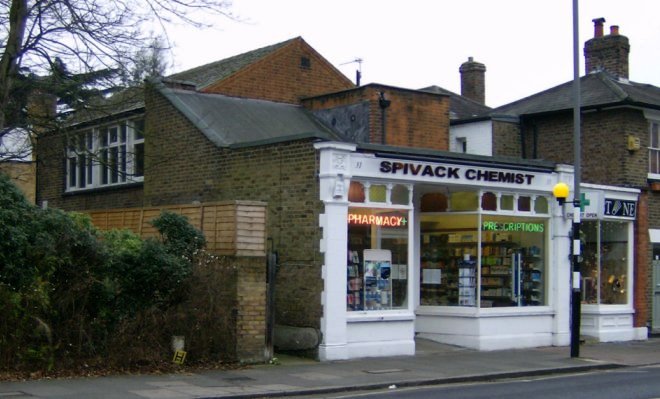
One year and two days later it's Saturday 2nd January 2010, and I'm once again making a field trip
in connection with the 1944 Eastercon. Odd to think of a visit to Central London as a field trip
but that's precisely what it is. I exit the Underground at Piccadilly Circus and walk along Coventry
Street until I come to the junction with Rupert Street. The building on one of those two facing corners
was once the Coventry Street Corner House. I'm not sure which so I take pictures of both. Above street
level they look much the same as they would've through most of the twentieth century so a websearch
should turn up an image to let me figure out which one it is. Which it does. The building is a
'Planet Hollywood' in 2010.
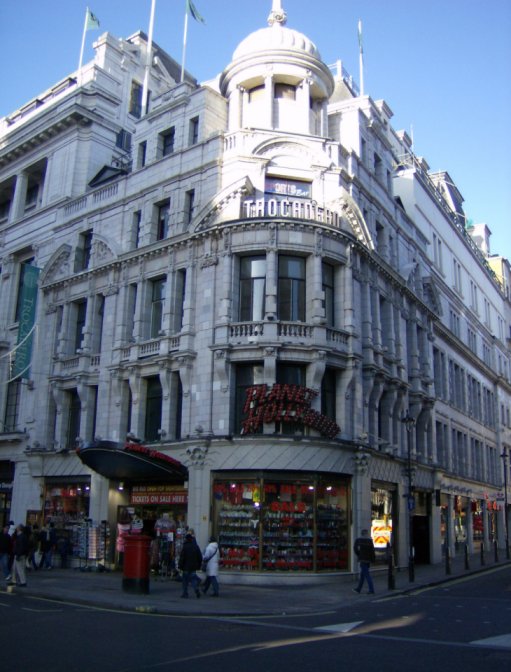
Then it's over to Greek Street to seek out the pub mentioned in the con reports. Gordon Holbrow
describes this as being on the corner of Greek Street. There are three pubs on the street, two
of them on corners. The candidates are The Three Greyhounds and The Coach & Horses. This latter
pub would later be the favoured watering hole of actors, writers and musicians such as Jeffrey
Bernard, George Melly, Lucien Freud, and Doctor Who actor Tom Baker, and is currently where the
fortnightly editorial lunch of Private Eye is held. Naturally, I hope this will turn out to be the
pub, but I take photos of both for if/when I uncover which it was.
Next, since I'm in town anyway, I amble over to Lincoln's Inn Fields and take several pictures of the
bandstand in the park there. This was where the 1941 gathering of fans later dubbed
'Bombcon' took
place so I want these for my archive. Trouble is, there are sawn off stumps of an earlier structure
visible in the floor so this may not be the original bandstand but a replacement. While I'm pondering
this, it suddenly occurs to me that as I'm no more than a ten minute walk away from Holborn
Library it might be worth seeing if they're open and checking out Greek Street in their local history
archives. They are, and a few minutes with a microfilm reader scrolling through old directories
gives me an address for the Shanghai Restaurant - 8 Greek Street - that puts it next door to the third
pub on the street, The Pillars of Hercules. Since that pub is not on a corner, this puzzles me.
Nevertheless I trudge back over to Greek Street to take more photos. Turns out The Pillars of Hercules
is kind of on a corner. The upper storeys are built over what I had taken to be an alley running down
the side of the pub at ground level but which turns out to be designated a street despite being barely
wide enough to allow a single car to squeeze past it. What had been the Shanghai restaurant in 1944 is
now a shop imaginatively named 'SHOP'. (Perhaps it sells generic products.)

Photos taken, I head home where a websearch I really should have done before setting out gives me
an address on Regent Street for the Cameo News Theatre. I may not have a photo of this as it is today,
but it doesn't matter. With the addresses of all the venues to hand I can now study a map and see for
the first time just why the Eastercon's organisers chose them. That's the cool thing about this sort of
research; it gives you a glimpse into what those guys were thinking, all those years ago.
...Rob Hansen, January 2010
|





